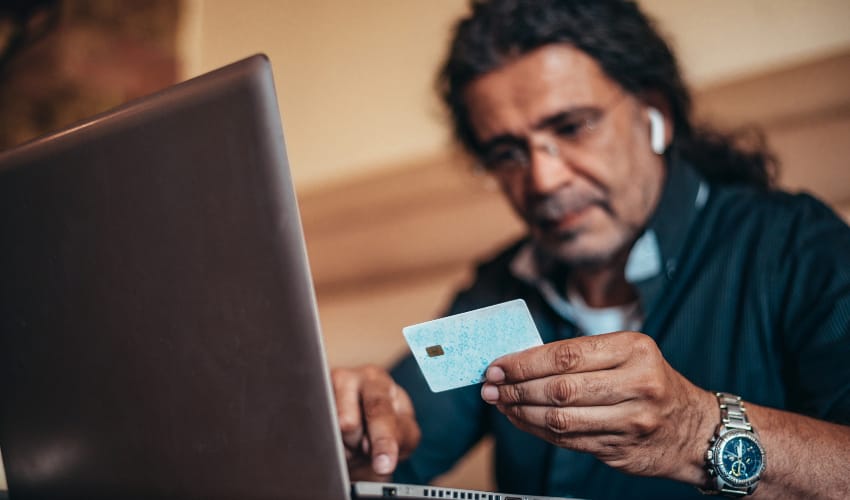
In Focus – SCCCU Blog
Stay informed about the Credit Union’s activities, plus get practical advice on a variety of personal finance topics.

What Should I Do If My Identity Is Stolen?
It all happened so fast. Maybe the person on the phone spoke with urgency and authority, and before you knew it, your Social Security number came flying from your lips. Or maybe it was a slower grooming process — the scammer convinced you they were a real rep from a trusted financial institution, and you felt secure enough to spill.
Does any of that sound familiar?
Sadly, we live in an era rife with scams. The truth is, scammers want everything: your birthdate, your address, your Social Security number, your logins, your mother’s maiden name. To a professional scammer, no type of information is too trivial. Anything they can collect helps them build a more convincing version of you.
So if you’ve had that “uh-oh” moment and realized your information may be in the wrong hands, what should you do? Let’s walk through the basics.
Step 1: Freeze Your Credit
Many thieves want your personal info so they can apply for credit or a loan in your name. That’s why the first thing you should do is freeze your credit. A credit freeze is the single most effective tool to prevent new account fraud. When you freeze your credit with the three major bureaus (Equifax, Experian, and TransUnion), lenders can’t pull your file. And if they can’t pull your file, no one can open new credit in your name. Here are a few things you should know to place a credit freeze on your account:
- You must contact each of the three bureaus individually.
- You can complete the credit freeze online, by phone, or by mail.
- It’s free.
- You can always “thaw” your credit later if you need to apply for something in the future.
Don’t think of this as a reactionary move. You can freeze your credit proactively (even if you’ve never been scammed), and you can also freeze the credit of children under age 16.
Step 2: Monitor Your Accounts
Freezing your credit stops new account fraud, but it doesn't prevent thieves from targeting your existing accounts, such as credit cards, checking, savings, online payment apps, retirement accounts, and even your Netflix login. That’s why it's critical to monitor your accounts regularly. We recommend setting up transaction alerts, opening your mail promptly, and enabling push notifications for purchases. The goal is to reduce the time between when a fraudster acts and when you notice.
Step 3: Change Your Passwords
Even if you don’t know whether your passwords have been compromised, change them. And if you’ve been guilty of reusing the same password across multiple accounts, now’s the time to fix that. Good password hygiene looks like this:
- Use unique passwords for every account.
- Enable multi-factor authentication whenever possible.
- Consider a password manager to store complex, random strings of characters you’ll never remember on your own.
Think of it as putting multiple locks on your digital front door.
Step 4: Consider Identity Theft Protection
Another option is investing in an identity theft protection service. At SCCCU, our Power Perks Checking account comes with identity theft and credit monitoring. For as low as $6 per month (with eStatements), you can protect your accounts and receive alerts for suspicious activity. While not mandatory, it's nice to know someone is watching your accounts when you're busy with day-to-day activities.
Step 5: Learn How Scammers Operate
Understanding the psychology of scams can help you avoid future scams. Scammers thrive on urgency and authority. They’ll drop acronyms like “SSA” or “IRS” into a phone call because they know those letters make people stop questioning. They’ll say “don’t hang up” because they don’t want you to take the time to pause and think. Here’s what’s important to remember:
- The IRS does not call and demand payment.
- The Social Security Administration does not call and demand your number.
- No legitimate credit card company or sheriff’s department will ever call you and ask you to make a payment over the phone.
If you’re unsure, hang up. Then call the number on the back of your card or on the official website. Trust, but verify.
Step 6: Reduce Vulnerabilities
Some groups are more vulnerable than others (especially seniors). If you have elderly family members, discuss scams with them. Help them set up transaction alerts and encourage them to have a “buddy” they call before giving out information or sending money. That buddy system can make all the difference. Scammers love to isolate their victims, pressuring them not to hang up until they’ve given in. Taking even a few minutes to consult someone else can break the spell.
No matter what, if someone demands immediate payment, or if the request feels desperate or rushed, that’s a red flag—scammers profit by creating urgency. Slow down and think logically.
Step 7: Reframe the Experience
If you do fall for a scam, here’s the most important thing to know: It is never your fault. The scammer is always to blame. Many people remain quiet after being scammed because they feel embarrassed. However, the more we normalize discussing it, the better we all become at identifying fraud before it spreads.
Also, take it as an opportunity to do a little “spring cleaning” of your digital life. Update your security practices and add stronger passwords. Freeze your credit if you haven’t already done so. Think of it as an expensive (but valuable) wake-up call.
- CATEGORIES: Financial Education Fraud & Scams

How to Avoid Phishing and Online Fraud
 Read more about How to Avoid Phishing and Online Fraud
Read more about How to Avoid Phishing and Online Fraud
Common Red Flags for Investment Scams
 Read more about Common Red Flags for Investment Scams
Read more about Common Red Flags for Investment Scams
The Risks of Peer-to-Peer Payment Platforms
 Read more about The Risks of Peer-to-Peer Payment Platforms
Read more about The Risks of Peer-to-Peer Payment Platforms







 Business Solutions
Business Solutions